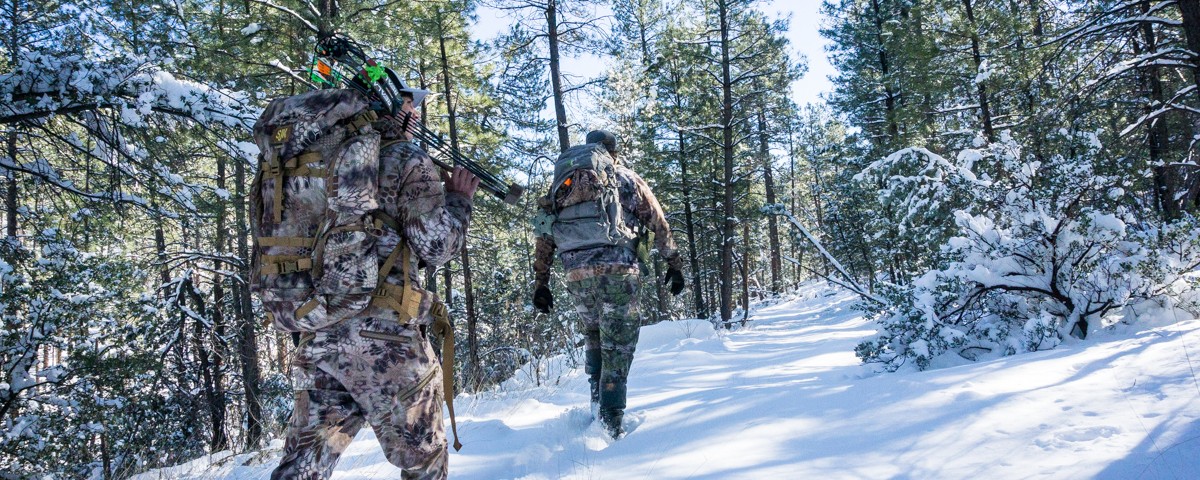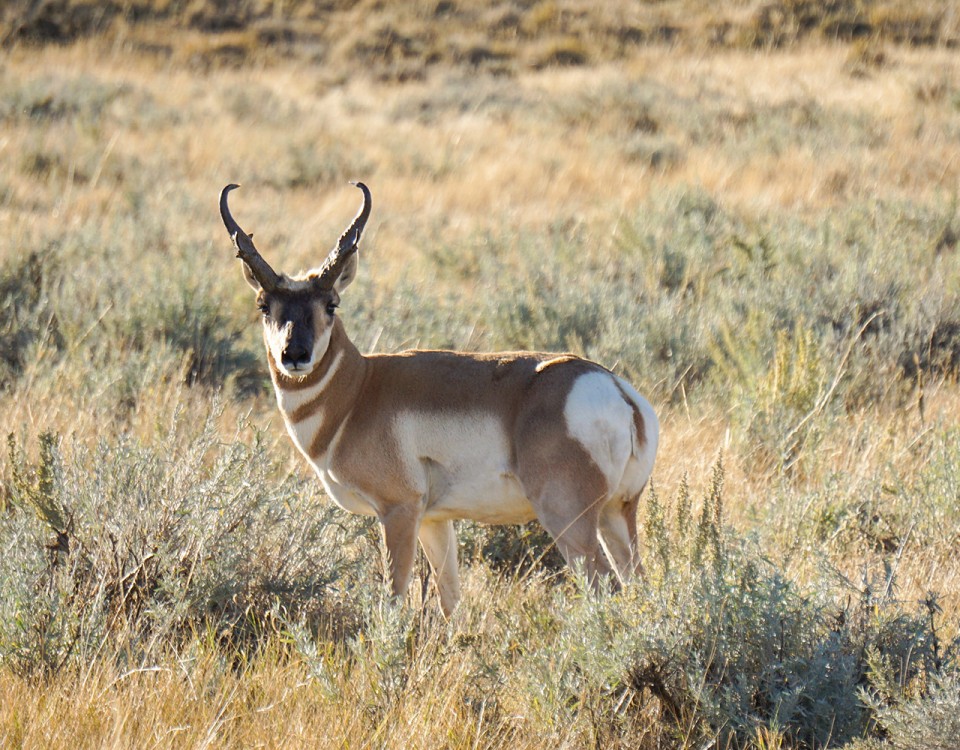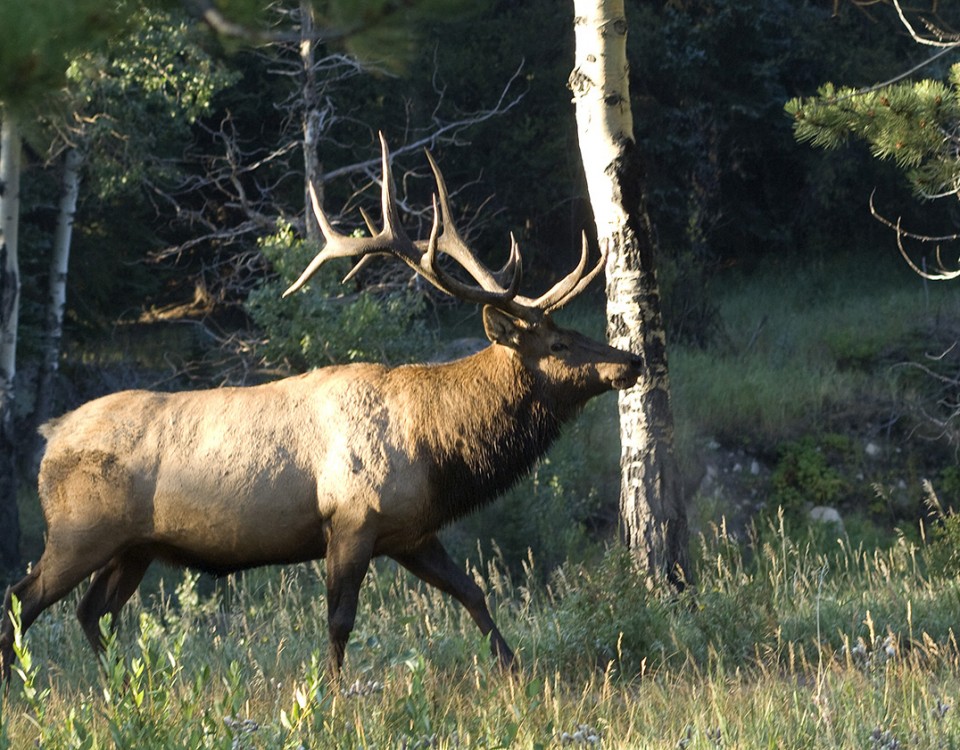
Arizona’s Underrated Opportunity: Coues Deer Archery Hunts
February 22, 2019
Arizona Elk and Antelope 2019 Draw Results Are Out
March 9, 2019Elk hunting in Arizona can put your gear to the test. From early season archery hunts to frigid late season hunts, elk hunters should expect demanding conditions.
On any given elk hunt, you might be required to walk five to ten miles a day and deal with temperature changes of 40 degrees between early morning and mid-afternoon. Throw in a chance of thunderstorms, hail, snow and high winds, and you’ve got a picture of what to expect. It’s not uncommon to experience all four seasons in a single day.
With that in mind, what does a hunter need for an elk hunt in Arizona? For starters, it helps to think about your clothing in three main categories: base layers, mid or insulating layers, and outer layers.
Base Layers
Base layers should dry quickly, allow a wide range of motion, regulate temperature, and stay relatively odor free. We usually recommend packing a lightweight base layer for warm weather, plus a heavier base layer in case the weather turns south.

When it comes to fabrics, we use both synthetic and merino wool. Both have pros and cons. Synthetics are comfortable in warm weather and they dry fast. The downside to synthetics is that they tend to stink after a few days. Merino wool is great for regulating temperature in mild or cold weather and it is naturally odor resistant. However, merino wool takes longer to dry when wet.
Whatever you do, avoid cotton at all costs. That includes your underwear and socks. The world’s best gear or Gore-Tex outerwear won’t do a bit of good if you’re wearing moisture-absorbing cotton underneath.
Mid-Layers and Insulating Layers
Like base layers, we recommend that hunters bring a couple of options in mid layers. For example, you might like a lightweight pullover for mild weather, plus an insulated, puffy jacket for cold conditions. Mid-layers for mild weather are often available in merino wool and synthetic fleece-type options. Either of these will do.

For your warmer insulating layer, down is going to offer the highest warmth-to-weight ratio. It weighs very little, yet it’s extremely warm. The biggest problem with down is that it loses its insulating properties if it gets wet. Many companies now produce water-resistant down to help with this issue. But if staying lightweight and having packable warmth is important (think late season hunts) down is hard to beat.
Synthetic insulations like PrimaLoft weigh a bit more for the amount of warmth, but they are much better at retaining their insulative properties if they get wet. If you were hunting elk in the Pacific Northwest, this might be a clear advantage. Here in Arizona, it’s rarely an issue.
Outer Layers
Perhaps the most important layer of your clothing system for an elk hunt is the outer layer. It must be light enough to carry in your pack if needed. But it also needs to be durable enough to withstand busting through brush and climbing over deadfall.

Outer layers can be broken down into two sub-categories. There’s the “all day” outerwear that you’ll wear throughout the day in dry weather. This includes your pants and perhaps a light jacket. Second is your rain gear, which you’ll only wear in rainy, snowy or otherwise wet conditions.
When it comes to pants, synthetic is the standard for most hunters. We recommend that hunters choose a versatile pant that is not too heavy or insulated. If weather is warm, you want to stay comfortable. If conditions get cold, you can always layer long underwear underneath. It’s always better to go with pants that are too light rather than too much.
Your “everyday” jacket or outerwear top should be quiet and highly breathable. Like the pants, we recommend a top that is not heavily insulated. This will make it more versatile. You can always add that puffy mid-layer underneath if the weather turns cold. Most companies make synthetic soft-shell jackets in this category, but a full-zip merino wool top can also be a great option.
Finally, consider your rain gear. If you’re hunting during the early archery elk season, you may be able to get away with a very lightweight set of rain gear since it’s likely to spend most of its time in your pack. If you expect to be hunting in more consistently cold, wet or snowy conditions, you might opt for slightly heavier rain gear that can withstand all-day abuse. No matter what rain gear you choose, it’s important that it is highly breathable for active hunting conditions.
Quality Hunting Gear
High quality hunting gear isn’t cheap. But great gear will keep you in the field longer, and will help make a hunt more comfortable, especially in extreme conditions. If you’re looking to upgrade your gear, begin with high quality outerwear and then work your way progressively down to your base layers. In addition to performing well in the field, quality gear can last for years if you care for it properly.
If you have questions about guided Arizona elk hunts with Antler Canyon Outfitters, please contact us or call Toby at (928) 205-8911.




